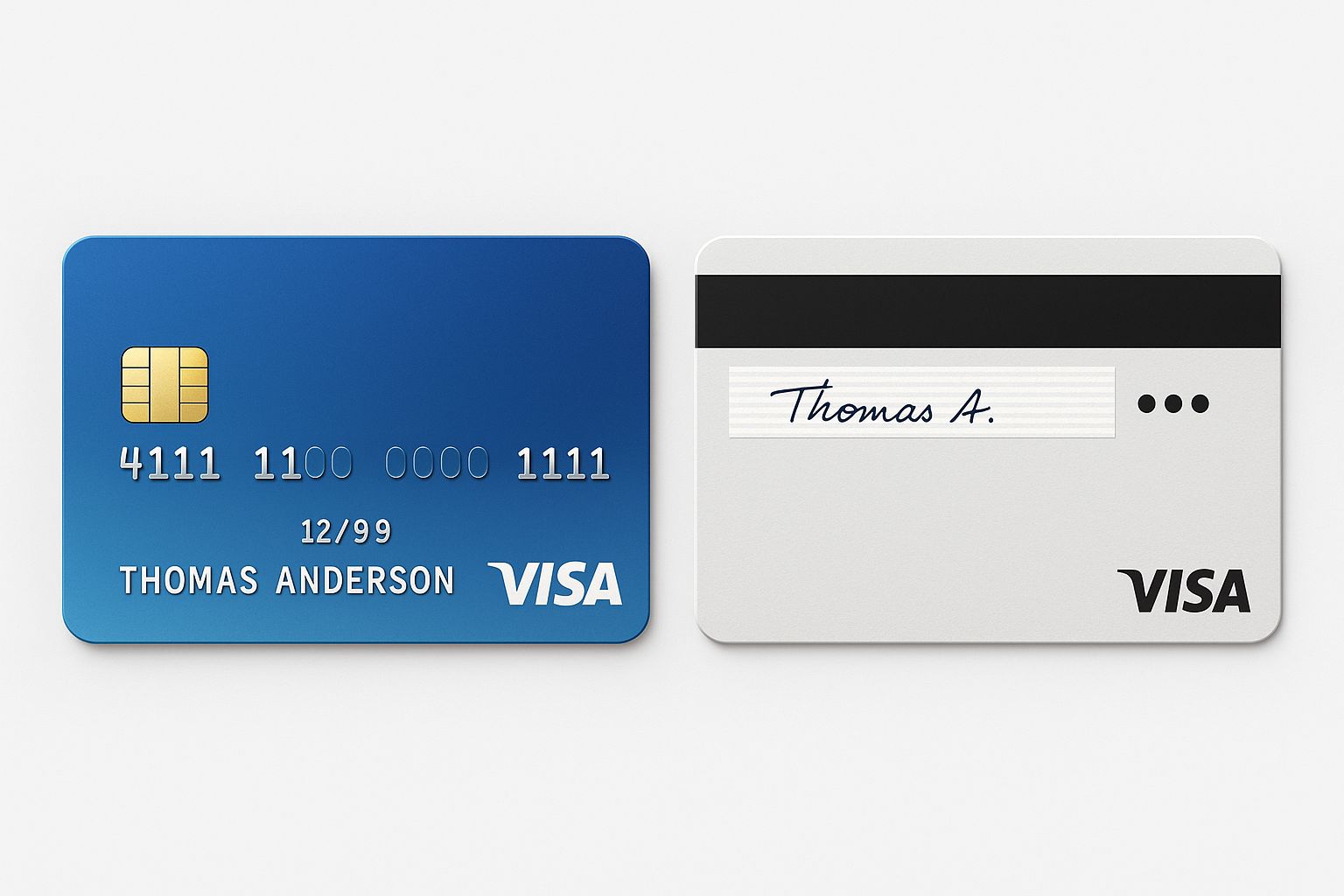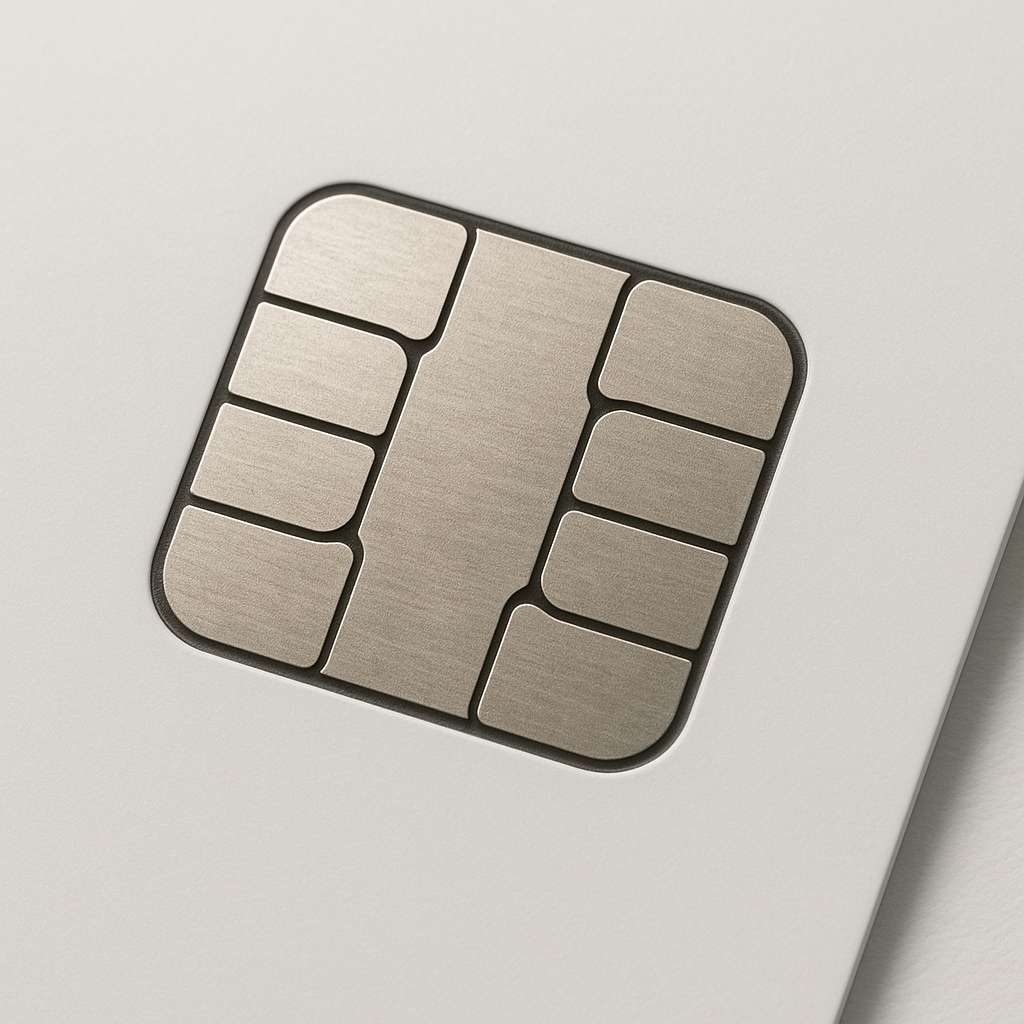Anatomy of a Debit and Credit Card
At first glance, a payment card looks simple. A simple piece of plastic or metal that you tap, insert, or type into a website. But in reality, it's one of the most sophisticated tools in modern finance. Each detail printed or embedded on the card serves a purpose, helping banks, merchants, and networks identify who you are and how your money should move. If you look closely, you'll notice that every card carries a mix of physical and digital elements that together make payments possible. The elements below vary depending on the bank or type of card – some elements, such as the cardholder's name, expiry date, or signature field, may not always be printed on the card. However, pick the items below as a general rule.
The Printed Elements
The PAN (Primary Account Number) is the long number across the front. It's not random. The first digits identify the card network (for example, Visa starts with 4, Mastercard with 5), followed by the issuer's bank code and your personal account number. The final digit is a checksum that helps verify the card's validity. If you want to nerd out, read more on Luhn's algorithm. Luhn's algorithm is basically some math logic that helps us check if a number is correct or wrong (quite useful when building validations before even sending the card number anywhere!).

Next comes the expiry date, which tells the system when the card will no longer be valid. Expiry dates help issuers rotate cards periodically, adding an extra layer of security and ensuring that lost or compromised cards eventually get replaced.
On some cards, you'll also see the cardholder name, which identifies the authorized user. On virtual or corporate cards, this can sometimes be a company name or a department instead of a person.
You'll also find a CVV or CVC code (Card Verification Value/Code) printed on the back. It's a short security number used for online or "card-not-present" purchases. The idea is that even if someone knows your card number, they can't use it online without the CVV.
Finally, there's the network brand — Visa, Mastercard, American Express, UnionPay, JCB, or others. This mark determines which global network routes the transaction and ensures the card can be recognized across millions of terminals and websites.
The Physical Elements
So what's inside? Can't be only plastic, right? Modern cards carry a small gold or silver EMV chip, short for Europay, Mastercard, Visa. This tiny microprocessor securely stores encryption keys and generates dynamic authentication codes for every transaction. That's what makes chip transactions far safer than the old magnetic stripe, which stored static data that could easily be copied. The chip works hand in hand with contactless technology (NFC). When you tap your card, your chip communicates with the terminal using encrypted radio signals, creating a secure one-time cryptogram that's almost impossible to clone.

Many cards still have a magnetic stripe on the back as a fallback for legacy systems. It contains similar data to the chip but without the same level of protection. The stripe's presence is a nod to backward compatibility: a bridge between old and new payment worlds.
What You Don't See
Some of the most important details never appear on the card itself. Behind the scenes, each card is tied to an Issuer Identification Number (IIN) — the first six digits of the PAN — which tells the network which bank issued it and what type of product it is: debit, credit, prepaid, or commercial. Cards are also linked to tokenized versions for use in digital wallets such as Apple Pay or Google Pay. These virtual identifiers replace the real PAN with a network-managed token, adding another layer of safety. Every card also contains hidden data fields that define transaction limits, usage restrictions (like "ATM-only" or "e-commerce-enabled"), and even the card's preferred currency.
Because full card numbers are highly sensitive, strict PCI DSS (Payment Card Industry Data Security Standard) rules govern how they can be displayed and stored. Merchants, gateways, and reporting tools are never allowed to show the entire PAN except in very specific, secure contexts. That's why your invoices or dashboards only show the first six and last four digits for e-commerce transactions (e.g., 4111 11•• •••• 1111), while in card-present environments like POS receipts you'll often see only the first four digits. Everything in between is masked, ensuring that even if a receipt or report leaks, the data cannot be used for fraud.
When you think about it, the humble card is really a digital passport for money. It's an identity document that lets banks, merchants, and networks recognize you, confirm you have funds available, and process your payment within seconds. The card might look static, but it's quite the opposite — a gateway to a global web of encrypted systems, real-time authorizations, and financial trust, all packed into a few grams of plastic or metal.
